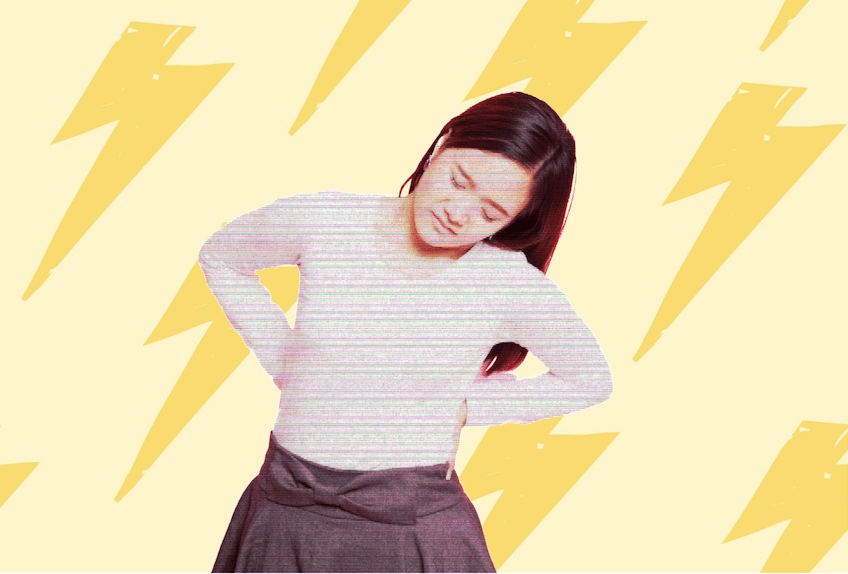Since the COVID-19 pandemic swept the world and government guidelines to work remotely became the norm, there have been countless studies into the effect of home working on our mental health, productivity and the economy.
Perhaps a little less has been said about remote working’s effect on our physical health, however. In the results of a survey released in February 2021 by the Royal Society for Public Health, of those who had suffered from the health and wellbeing impacts of home working, 39% reported musculoskeletal problems, whilst 37% said their sleep had become increasingly disurbed.
But those aren’t the only issues which have emerged as a result of the increase in remote working brought on by the global pandemic. Let’s dive in a little deeper; here are 4 home working health problems and their IDEAL remedies.
INSOMNIA
The term ‘coronasomnia’ has entered the popular lexicon recently, and with good reason; the University of Southampton revealed in August 2020 that ‘’sleep loss is affecting more people during the Covid-19 pandemic, reflecting rising stress levels due to anxieties about health, financial consequences, changes in social life and daily routine, all of which may affect sleep.’’
The study went on to report that the overall number of people suffering from sleep problems in the UK had risen sharply, from around 15% pre-pandemic to 25% during it. Wow.
During periods of stress and upheaval, it’s essential that you do all you can to ensure you’re sleeping as soundly as possible. This is because regular bad nights of sleep can directly affect your wider health in myriad ways, making you prone to ‘’serious medical conditions, such as obesity, heart disease, high blood pressure and diabetes’’, according to the NHS.
If you’re looking to take back control of your sleep, check out these 5 lifestyle tips on how to sleep through the night without waking.
TECH NECK
If it was comfortable to sit up straight, then bad posture would not be such a common issue among adults!
But the use of laptops and makeshift office furniture as a hastily arranged home office set-up has forced some unusual working positions and made slouching the default setting for many. This had led to many reporting musculoskeletal problems, particularly in the upper shoulders and neck, and as a consequence, the term ‘tech-neck’ has gained frequency. Fortunately, mitigating the issue is fairly easy.
Sitting up straight and doing some healthy stretches (both warming up and down, pre and post work) can relieve the pain and improve the consequential headaches and fatigue that the condition can create. Having a quality chair, ideally ergonomic and contouring to your back in a straight posture without being too constrictive or uncomfortable is essential, too.
The height at which you place your screen and the positioning of your keyboard also play a part in reducing the onset of tech neck by establishing good posture. Ideally, your screen should be just slightly below eye height when your back is straight, at a distance of around 50 centimetres (arm’s length) from your eyes and with the monitor tilted back between 10 and 20 degrees. The full length of your forearm should rest on your desk when manipulating your mouse, with your wrists should be placed gently on your desk a few centimetres in front of your keyboard as you type.

EYE STRAIN
Naturally following on from that, eye strain brought about by the glare of screens and that pesky tech neck has also increased during this prolonged period of home working. Also sometimes referred to as Computer Vision Syndrome, humans can suffer from temporary – though not harmful in the long run – discomfort from staring into their screens at close distance all day. Symptoms include blurred vision; red, sore eyes; low-level twitching, soreness in the neck and headaches.
Fortunately, there are some simple solutions to mitigate the symptoms of digital eye strain. Check them out here.
STRESS-RELATED TEETH GRINDING
A surprising health issue which has emerged since the increase in home working has been located in our mouths; cracked teeth and tooth fractures.
Indeed, there have been several recent reports linking the stress of remote working with teeth grinding and their subsequent damage, with the New York Times reporting that ‘’From Covid-induced nightmares to “doomsurfing” to “coronaphobia,” it’s no secret that pandemic-related anxiety is affecting our collective mental health. That stress, in turn, leads to clenching and grinding, which can damage the teeth.’’
Interestingly, the article goes on to link two of the issues we previously mentioned, insomnia and tech neck, as being chief causes of these emerging tooth problems.
The NYT suggests that ‘’poor posture during the day can translate into a grinding problem at night’’. As such, it’s essential that you scroll up a little and remind yourself of those tech neck mitigating tips we mentioned earlier! The newspaper also draws the link between poor sleep quality and teeth grinding, suggesting restlessness at night causes even more of that grinding. Fascinating stuff.
Dentist and prosthodontist Tammy Chen recommends, via Inc.com, ‘’getting a night guard, a device that you wear at night that keeps you from harming your teeth when you clench your jaw. And if it turns out you are clenching or grinding during the day, you can wear it then, too.’’
Should you need to correct teeth that have become misaligned, then in the UK, clear braces prices start at around £1’500 when bought privately, but are considerably cheaper when accessed through the NHS. That said, orthodontic treatment is only usually available via the NHS for those aged under 18.
THE BOTTOM LINE
The COVID-19 pandemic has changed the way we live and work in myriad, unpredictable and continuing ways. For those working from home, a set of unforeseen issues has arisen. Fortunately, the ways to mitigate them are fairly simple to do. Now, stop squinting into this screen and go and get some sunshine!





